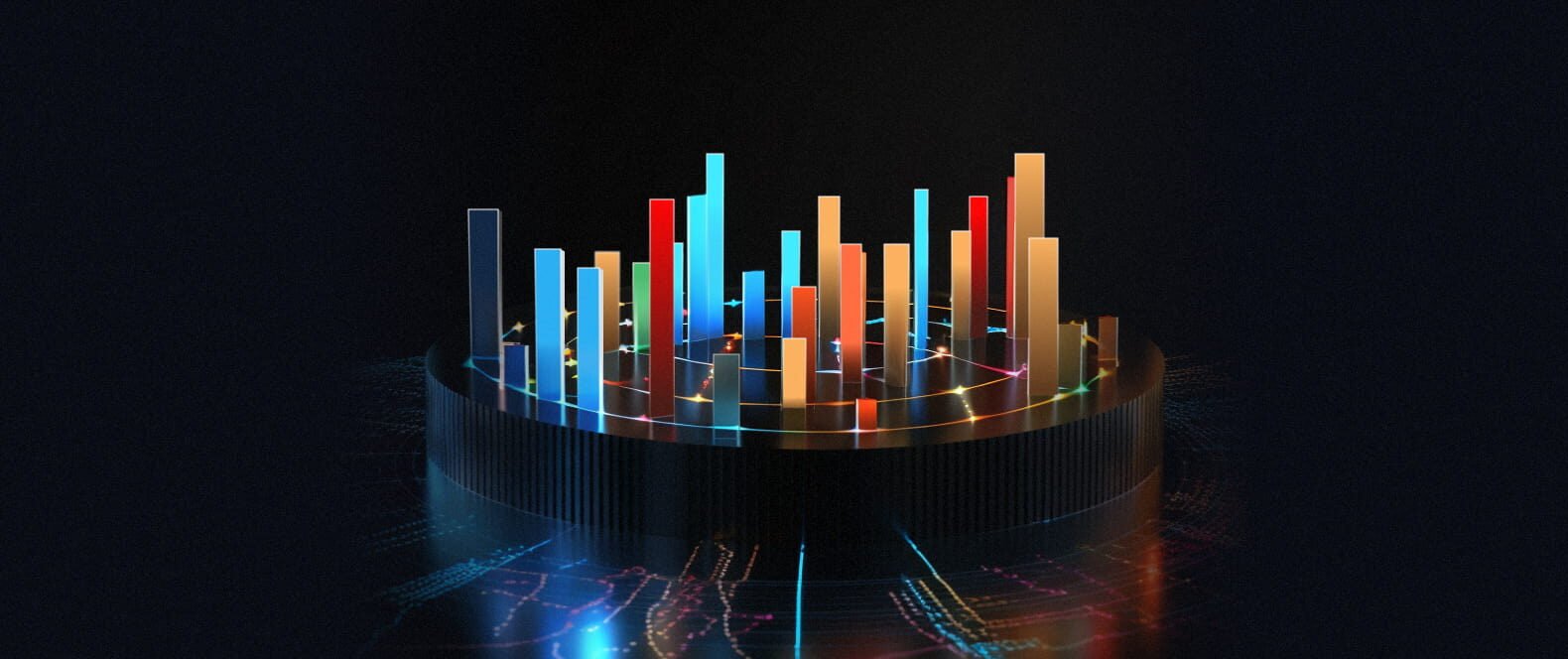In today’s data-driven business environment, organizations generate massive amounts of information every second. However, raw data alone holds little value without proper analysis and interpretation. This is where business intelligence tools for data analysis become indispensable assets for modern enterprises. These powerful platforms transform complex datasets into actionable insights, enabling companies to make informed decisions, identify growth opportunities, and maintain competitive advantages.
Whether you’re a small startup looking to understand customer behavior or a large corporation seeking to optimize operations across multiple departments, choosing the right BI solution can dramatically impact your organization’s success and profitability in 2025.
What Are Business Intelligence Tools for Data Analysis?
Business intelligence tools for data analysis are sophisticated software platforms designed to collect, process, and visualize large volumes of business data. These solutions enable organizations to transform raw information into meaningful insights through advanced analytics, reporting capabilities, and interactive dashboards.
Modern BI platforms integrate data from multiple sources, including databases, spreadsheets, cloud applications, and real-time feeds. They employ various analytical techniques such as statistical analysis, predictive modeling, and machine learning algorithms to uncover patterns, trends, and correlations within your data.
The primary goal of these tools is to democratize data access across organizations, allowing both technical and non-technical users to explore information, create reports, and make data-driven decisions without requiring extensive programming knowledge.
Core Components of BI Tools
Effective business intelligence platforms typically include several essential components:
Data Integration and ETL Processes: These features enable seamless connection to various data sources, ensuring consistent and clean information flow into your analytical environment.
Interactive Dashboards: Visual interfaces that present key performance indicators, metrics, and trends through charts, graphs, and other visual elements.
Reporting Capabilities: Automated and ad-hoc reporting functions that generate detailed analyses for different stakeholders and departments.
Self-Service Analytics: User-friendly interfaces that empower business users to explore data independently without relying on IT departments.
Top Business Intelligence Platforms in 2025

Microsoft Power BI
Microsoft Power BI stands as one of the most popular business intelligence tools for data analysis in the enterprise market. This comprehensive platform offers robust integration with Microsoft ecosystem products, making it an ideal choice for organizations already using Office 365, Azure, or other Microsoft services.
Power BI excels in data visualization capabilities, providing over 100 pre-built connectors to various data sources. Its drag-and-drop interface allows users to create sophisticated reports and dashboards without extensive technical expertise. The platform’s AI-powered features include natural language queries, automated insights, and anomaly detection.
Key Features:
- Real-time dashboard updates and monitoring
- Advanced data modeling capabilities
- Mobile-responsive design for on-the-go access
- Collaborative sharing and commenting features
- Integration with Azure Machine Learning
Pricing: Starting at $10 per user per month for the Pro version, with Premium options available for larger organizations.
Tableau
Tableau has long been recognized as a leader in data visualization and business intelligence. This platform excels particularly in creating stunning, interactive visualizations that help users quickly and intuitively understand complex data relationships.
The software’s strength lies in its ability to handle large datasets efficiently while maintaining excellent performance. Tableau’s drag-and-drop interface enables users to create compelling visualizations without prior coding knowledge, while also supporting advanced scripting for power users.
Key Features:
- Exceptional data visualization capabilities
- Strong community support and extensive training resources
- Robust data preparation and cleaning tools
- Advanced statistical functions and calculations
- Cloud and on-premises deployment options
Pricing: Tableau offers multiple tiers starting from $70 per user per month for Tableau Creator.
QlikView and QlikSense
Qlik provides two primary business intelligence solutions: QlikView for guided analytics and QlikSense for self-service business intelligence. Both platforms utilize Qlik’s associative analytics engine, which allows users to explore data relationships dynamically.
QlikSense particularly stands out for its intuitive user experience and powerful data discovery capabilities. The platform’s associative model enables users to click through data freely, revealing hidden insights and connections that traditional query-based tools might miss.
Key Features:
- Associative analytics engine for dynamic data exploration
- Innovative visualizations that adapt to data context
- Augmented intelligence capabilities
- Multi-cloud deployment flexibility
- Advanced security and governance features
Google Looker Studio
Google Looker Studio (formerly Google Data Studio) offers a free, web-based business intelligence solution that integrates seamlessly with Google’s ecosystem of products. While it may lack some advanced features of premium platforms, it provides excellent value for small to medium-sized businesses.
The platform excels at creating shareable reports and dashboards, making it ideal for marketing teams, digital agencies, and organizations that rely heavily on Google services like Analytics, Ads, and Google Sheets.
Key Features:
- Free tier with robust functionality
- Seamless integration with Google services
- Collaborative editing and sharing capabilities
- Custom data connectors and APIs
- Mobile-optimized report viewing
Essential Features in Modern BI Tools
Data Connectivity and Integration
Modern business intelligence tools for data analysis must support a diverse range of data sources to provide comprehensive insights. Look for platforms that offer:
Multi-Source Connectivity: Ability to connect to databases (SQL Server, Oracle, MySQL), cloud services (AWS, Azure, Google Cloud), SaaS applications (Salesforce, HubSpot), and file-based sources (Excel, CSV).
Real-Time Data Processing: Capabilities to handle streaming data and provide up-to-the-minute insights for time-sensitive business decisions.
Data Quality Management: Built-in tools for data cleansing, validation, and transformation to ensure analytical accuracy.
Advanced Analytics Capabilities
Contemporary BI platforms should extend beyond basic reporting to include:
Predictive Analytics: Machine learning algorithms that forecast future trends and outcomes based on historical data patterns.
Statistical Analysis: Advanced statistical functions for correlation analysis, regression modeling, and hypothesis testing.
What-If Scenarios: Simulation capabilities that allow users to model different business scenarios and their potential impacts.
Also Read: Blockchain for Companies: A Business Operations Game Changer
User Experience and Accessibility
The best business intelligence tools prioritize user adoption through:
Intuitive Interfaces: Drag-and-drop functionality that enables non-technical users to create analyses independently.
Mobile Optimization: Responsive design that ensures dashboards and reports function properly on smartphones and tablets.
Natural Language Processing: AI-powered features that allow users to ask questions in plain English and receive relevant insights.
Implementation Best Practices

Data Governance Strategy
Successful BI implementation requires establishing clear data governance policies:
Data Quality Standards: Define rules for data accuracy, completeness, and consistency across all sources.
Access Controls: Implement role-based permissions to ensure sensitive information remains secure while enabling appropriate access levels.
Documentation Standards: Maintain comprehensive documentation of data sources, definitions, and analytical methodologies.
Training and Change Management
User adoption often determines the success of BI projects. Consider these approaches:
Comprehensive Training Programs: Provide ongoing education for both technical and business users at different skill levels.
Champion Networks: Identify and train power users who can support colleagues and promote best practices.
Gradual Rollout: Implement BI tools in phases, starting with pilot groups before rolling out organization-wide.
Performance Optimization
Ensure your BI solution delivers optimal performance through:
Data Architecture Planning: Design efficient data models and storage strategies that support analytical workloads.
Query Optimization: Implement indexing, partitioning, and other database optimization techniques to enhance query performance.
Monitoring and Maintenance: Establish regular monitoring procedures to identify and resolve performance bottlenecks.
Industry-Specific Applications
Healthcare Analytics
Healthcare organizations use business intelligence tools for data analysis to improve patient outcomes and operational efficiency:
- Patient flow optimization and resource allocation
- Clinical performance monitoring and quality improvement
- Population health management and disease prevention
- Revenue cycle management and cost reduction
- Regulatory compliance reporting and documentation
Financial Services
Financial institutions leverage BI platforms for:
- Risk assessment and fraud detection
- Customer segmentation and personalization
- Regulatory reporting and compliance monitoring
- Portfolio performance analysis and optimization
- Market trend analysis and investment decision support
Retail and E-commerce
Retail businesses utilize BI tools for:
- Inventory management and demand forecasting
- Customer behavior analysis and personalization
- Price optimization and competitive analysis
- Supply chain visibility and logistics optimization
- Marketing campaign effectiveness measurement
Future Trends in Business Intelligence
Artificial Intelligence Integration
The integration of AI and machine learning capabilities continues to transform business intelligence tools for data analysis and insights. Emerging trends include:
Automated Insights: AI algorithms that automatically identify significant patterns and anomalies in data, reducing the time required for manual analysis.
Augmented Analytics: Intelligent features that suggest relevant visualizations, highlight essential trends and provide contextual explanations for data patterns.
Natural Language Generation: Automated narrative creation that transforms analytical findings into human-readable explanations and recommendations.
Cloud-Native Architectures
Modern BI platforms increasingly adopt cloud-native designs that offer:
Scalability: Elastic computing resources that automatically adjust to changing analytical workloads.
Collaboration: Enhanced sharing and collaboration features that support remote and distributed teams.
Integration: Seamless connectivity with cloud-based data sources and business applications.
Real-Time Analytics
Organizations demand increasingly real-time insights for competitive advantage:
Streaming Analytics: Processing of continuous data streams for immediate decision-making.
Edge Computing: Analytical processing closer to data sources for reduced latency and improved performance.
Event-Driven Architectures: Systems that trigger automated responses based on specific data conditions or thresholds.
Choosing the Right BI Solution
Assessment Criteria
When evaluating business intelligence tools for data analysis, consider these factors:
Scalability Requirements: Ensure the platform can grow with your organization’s data volume and user base.
Integration Capabilities: Verify compatibility with existing systems and data sources to ensure seamless integration.
Total Cost of Ownership: Consider licensing, implementation, training, and ongoing maintenance costs.
Support and Community: Evaluate the quality and availability of vendor support and community resources.
Proof of Concept Approach
Before committing to a BI platform, conduct thorough proof of concept testing:
- Define Success Metrics: Establish clear criteria for evaluating platform performance and user satisfaction.
- Select Representative Use Cases: Choose analytical scenarios that reflect your organization’s typical requirements.
- Involve End Users: Include actual business users in testing to ensure the solution meets practical needs.
- Evaluate Performance: Test the platform’s ability to handle your data volumes and complexity requirements.
Conclusion
Business intelligence tools for data analysis have become essential components of successful modern organizations. These powerful platforms enable companies to transform raw data into actionable insights, driving better decision-making and competitive advantages across industries.
When selecting the right BI solution for your organization, carefully evaluate your specific requirements, including data sources, user needs, scalability requirements, and budget constraints. Consider starting with a proof of concept to ensure the chosen platform aligns with your business objectives and user expectations.


